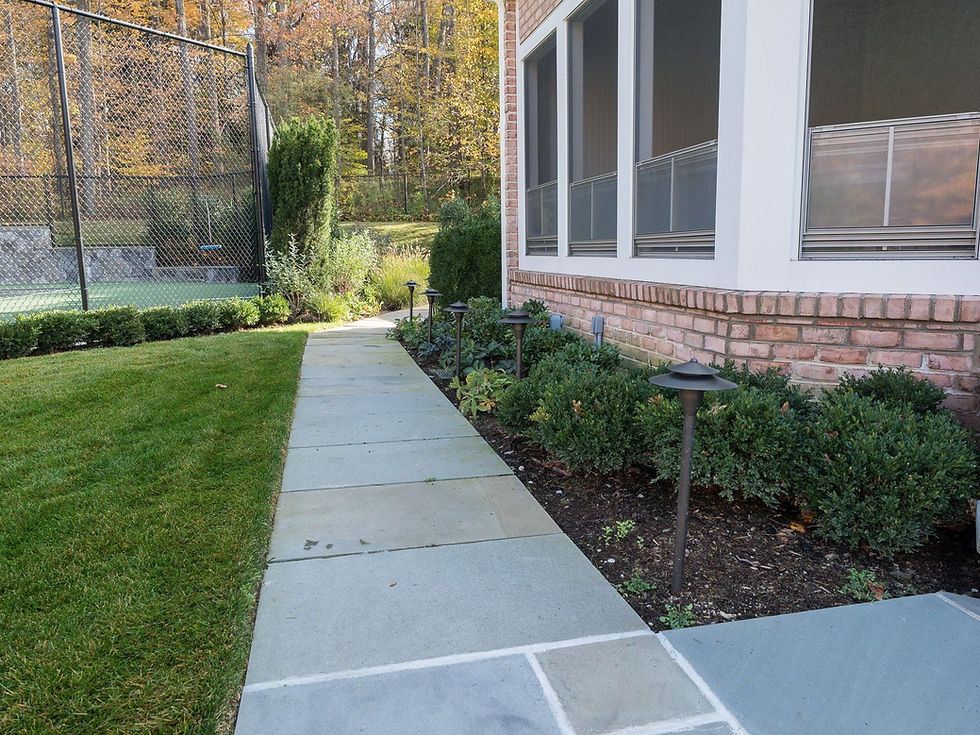Achieve a Healthy Looking Landscape Design With Proper Lawn Care in the Briarcliff Manor, NY Area
- Jul 18, 2023
- 3 min read
Updated: Nov 24, 2023

Proper lawn care contributes to a thriving, healthy-looking landscape that not only enhances the aesthetic appeal of your Briarcliff Manor, NY property but also promotes the overall health of your green spaces. With an understanding of local conditions and appropriate care techniques, achieving a stunning landscape is an attainable goal for every homeowner.
Related: The Art of Landscape Design: Creating Stunning Outdoor Spaces in the Irvington and Rye, NY Areas
Understanding Your Local Environment
We enjoy a temperate climate with rich soil—a perfect recipe for stunning landscapes. However, maintaining a healthy lawn requires expert understanding of local environmental conditions, including weather patterns, native plants, and common pests.
Regular Mowing and Proper Mowing Techniques
The path to a healthy-looking landscape begins with regular mowing. Your mowing schedule can be based on the growth rate of your grass, usually once a week during the peak growing season. However, the one-third rule is important: Generally speaking, it’s not wise to cut more than one-third of the grass blade at once to prevent stress on the grass. Sharp mower blades help ensure a clean cut, reducing the risk of disease and pests.
Seasonal Fertilization and Soil Testing
Lawn fertilizing provides the nutrients needed for healthy growth. In our area, it’s typically recommended to fertilize in early spring, late spring, and fall. However, the specific timing and type of fertilizer depend on your grass type and soil conditions. Regular soil testing can help determine what nutrients your lawn needs, reducing guesswork and preventing over-fertilization.
Effective Irrigation
Proper irrigation is needed to maintain a healthy lawn, but how and when you water makes a difference. Aim for early morning watering to minimize evaporation. At first it may be recommended to provide deep watering to encourage root growth, to make your lawn more drought-resistant, but it’s ideal to establish an irrigation system that takes the guesswork out of watering and provides a “just right” amount of water based on sensors that detect recent rain amounts.
Aeration and Dethatching
Soil compaction and thatch buildup can prevent water, air, and nutrients from reaching grass roots. Your lawn should be once every one to two years, preferably in the fall, to relieve soil compaction. Dethatching is generally done in late spring or early fall if the thatch layer is more than half an inch thick.
Weed Control
Weeds compete with grass for nutrients, sunlight, and space. Regular mowing, proper fertilization, and the use of pre-emergent herbicides can help control weeds. For persistent weed problems, a comprehensive weed control plan can be put in place.
Planting Local and Drought-Resistant Species
Consider incorporating native plants into your landscape. These plants are adapted to the local climate and soil conditions, requiring less maintenance and water. Additionally, they can attract local wildlife, enhancing your yard’s biodiversity.
Regular Inspection for Pest and Disease
Regularly inspect your lawn for signs of pests or disease. Brown patches, circular rings, chewed grass blades, and an influx of birds or insects can indicate potential issues. Early detection allows for more effective treatment, minimizing damage to your lawn.
Overseeding
Overseeding can help you maintain a lush and thick lawn, which is not just visually appealing but also helps in crowding out potential weeds. It involves spreading grass seeds over your existing lawn, typically in the fall when the weather is cool and there’s less competition from weeds.
Use of Mulch
Mulch around flower beds and trees helps to retain soil moisture, suppress weeds, and improve soil health. It also adds a neat, finished look to your landscaping. Organic mulch, like bark or wood chips, can even enrich your soil as it decomposes.
Pruning and Trimming
Regular pruning and trimming of trees and shrubs are essential to keep them healthy and to maintain the aesthetics of your landscape. Pruning allows for better air circulation and light penetration, reducing the risk of disease. Always remember to prune at the right time for each specific plant to avoid causing unnecessary stress or injury.




Comments